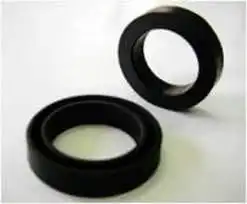2. Being able to withstand high pressure: This is a part of what makes PTFE seals so valuable in applications with heavy-duty machinery, such as mining or agricultural.
3. Chemically inert: The carbon-fluorine bonds in PTFE make it non-reactive, meaning it cannot be broken down from repeated exposure to chemicals.
4. Water, oil, and dirt repellent: The fact that PTFE is resistant to these common contaminants makes it an excellent component in seals.
5. Be slippery: It's not just water, oil, and dirt repellent – it repels everything! (PTFE is so slippery that insects cannot get a grip, and tend to fall off.) This feature is beneficial in a number of sealing applications across industries, because it means the seal does not require lubrication.
6. Can be used with a variety of media: PTFE lip seals have successfully been used to seal in (or out, as the case may be) all types of media, including granules, synthetic lubricants, powders, steam, resins, heat transfer oils, chemical waste water, foodstuffs, glue, and more.
7. Be resistant to extreme temperatures: The lowest temperature PTFE seals can operate at is –275°C, and the highest temperature is 316°C. It Can run at high RPMs: PTFE performs better than rubber compounds over a much wider range of shaft speeds and diameters.
8. Consider this comparison: If you have a 90mm diameter shaft or greater, you cannot effectively use an elastomeric seal above 6500 RPMs. When you use a PTFE seal of the same size, it is able to run up to 30,000 RPMs!
9. Unlimited shelf life: PTFE will not break down, meaning it can be stored for as long as necessary.
10. When blended, its properties are enhanced: Mixing PTFE with other substances is done to enhance one or more of the characteristics of PTFE, so that the end result would be a better fit for a given application.

Next: Flange connection and weld connection
Previous: The features of a globe valve
